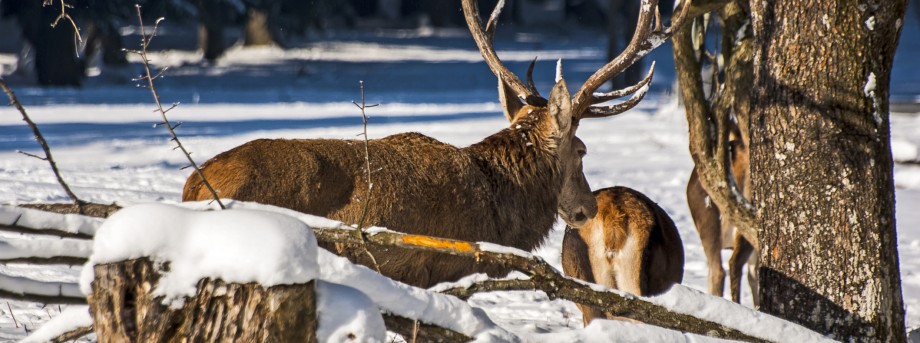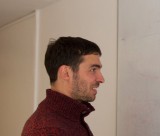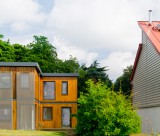The University of Nottingham
 Exchange online
Exchange online
Research Exchange
Fair game — University and National Trust partnership to promote Britain’s wild venison

It’s cheap, healthy and sustainable and its provenance can easily be traced back to its free-range, organic roots. So why aren’t we Brits eating more wild venison?
Archaeologists at The University of Nottingham are joining forces with the National Trust to promote the benefits of eating the meat by charting the history of fallow deer herds at their properties, starting at Charlecote Park in Warwickshire.
The project could offer a solution to the rapidly expanding deer population which has been associated with environmental damage to crops and woodlands and the cause of almost 70,000 accidents on Britain’s roads every year.
Dr Naomi Sykes, of the University’s Department of Archaeology, who is leading the project, says: “We believe that rather than being a ‘problem’ deer are a wonderful resource, if only we could reconnect with the concept of venison. At a time when locally sourced, seasonal, healthy and ethical foods are at the top of consumers’ wish-lists — particularly in the wake of the horsemeat scandal — wild venison ticks every box. Wild deer, or those that have not been supplementary fed, provide exceptionally lean venison and, most importantly, you don’t get a more free-range and ‘happy’ meat.”
However, the message is not reaching the general public, many of whom find the ‘hunting’ of deer distasteful and still associate venison with the cuddly Disney cartoon character Bambi. Deer culling has to take place but a lack of demand for the meat means the majority of venison produced in Britain is exported and perversely the little found on British supermarket shelves is from imported farmed deer.
Dr Sykes and colleagues are using their research into the natural and cultural history of Britain’s fallow deer to serve up the issue in a more engaging and palatable way and have launched the Fair Game Initiative, an educational campaign staffed by archaeologists and deer stalkers, to explain the history of Britain’s fallow deer and the benefits of eating their venison.
Dr Sykes continues: “Our research indicates that modern deer management problems are a legacy of the medieval period, so perhaps we need to look for medieval solutions. Deer hunting and the consumption of venison were central to medieval society, helping to create a sense of community as people came together to help procure and consume the venison from a single animal. However, hunting fell out of fashion, people lost their taste for venison and the deer parks fell into disrepair. Their inhabitants escaped into the countryside and with an absence of human and other natural predators — British bears, wolves and lynx had been hunted to extinction by the 13th century — the deer were left to breed.”
The team are now working with staff at the National Trust’s Charlecote Park — a Tudor house and deer park in Warwickshire — to trace the origins of the property’s fallow deer herd and to produce literature for visitors that will tell the story of Charlecote’s deer and the benefits of eating the venison, which is already on sale through the park’s gift shop.
They will be using DNA technology to test bone taken from old antler trophies to trace the origins of the park’s original deer population — sadly wiped out around 10 years ago when disease hit the herd — as well as looking at the provenance of Charlecote’s more recent fallow inhabitants.
Lisa Topham, Park and Garden Manager at Charlecote Park, says: “There has been a deer herd here at Charlecote Park since the 14th century and they are an important part of the landscapes of large, historic estates throughout the country. We take the welfare of our deer extremely seriously here, and we’re proud to have won awards for the condition of the herd. Whilst we need to control the numbers of deer to keep the herd healthy and happy, nothing is wasted as we sell the meat from the culled deer in our shop. As a vegetarian myself, animal welfare is hugely important to me and I love the idea that our visitors can literally see where the meat they’re buying has come from. How often do shoppers get to say that?
“The deer have always been an integral part of Charlecote Park, so this is a fascinating partnership for us. We’re all looking forward to finding out more about the herd and being able to share these new stories with our visitors.”
Dr Sykes and colleagues will also be training National Trust staff in the ancient method of ‘unmaking’ a complete fallow deer — a flamboyant medieval ritual in which the deer is skinned and butchered and then divided up among the community.
Dr Sykes hopes to roll the initiative out to other National Trust properties with fallow deer herds in the future.
Tags: archaeology, Charlecote Park, food, National Trust, organic, venison
Leave a Reply
Other News

Top prize for quantum physicist
A University of Nottingham physicist has won a prestigious medal from the Institute of Physics for […]

Zero carbon HOUSE designed and built by students comes home
Design and construct a low cost, zero carbon, family starter home, transport it to Spain, build […]